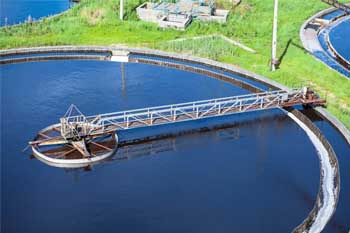Sustainable development comes to wastewater treatment in the form of "sherpa" bacteria
Wastewater must also be treated to an extent that it does not affect the environment into which it is discharged, the goal being to ensure that urban growth is sustainable.Guest post written by Marina Arnaldos Orts from ACCIONA Agua:
From a public health perspective, treatment of the wastewater produced by the population and industries in a given urban area is critical to ensure stable growth. Wastewater must also be treated to an extent that it does not affect the environment into which it is discharged, the goal being to ensure that urban growth is sustainable.
In order for wastewater treatment to be sustainable, an innovation project must be implemented to develop a new biological wastewater treatment process with low energy consumption and a low environmental impact. The project consists of determining whether the normal processes that take place in a wastewater treatment plant (WWTP)—i.e. elimination of all pollutants—can be carried out with very low levels of oxygen.

In a context in which the main energy consumption in WWTPs is related to the supply of oxygen for the biological process, achieving this goal would significantly increase the sustainability of water treatment processes by lowering fossil fuel consumption and significantly reducing greenhouse gas emissions. This would allow for the recovery of a vital natural resource, water, without affecting the availability of other resources, such as energy, and without polluting the environment directly, through contaminated water discharges, or indirectly, through greenhouse gas emissions.
In an anthropomorphic sense, the solution was to select "sherpa" bacteria, which can survive in very low-oxygen environments, like the people who live high in the Himalayas. These bacteria are capable of capturing the little oxygen that is available by utilising specific molecules that are similar to the haemoglobin that humans and other animals have in their blood. As occurs in our bodies, this molecule captures oxygen and transports it to the areas of the cell where it is needed. The idea behind this project, conceived as part of my PhD thesis, received the 2013 Honor Award from the American Academy of Environmental Engineering and Science and is being developed by ACCIONA Agua's R&D and Innovation Department for direct application in WWTPs at different scales.
Preserving the environment involves developing processes for treating contaminated water to ensure sustainable growth of urban areas and protection of natural areas. But it's also important to bear in mind the issue of fossil fuel consumption and greenhouse gas emissions resulting from these processes: this innovation seeks to protect the environment at all levels by ensuring a sustainable future in water treatment and sanitation.
Marina Arnaldos Orts
Head of Desalination and New Technologies in the R&D and Innovation Department.
ACCIONA Agua







